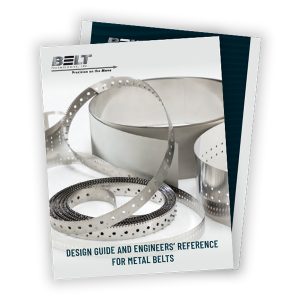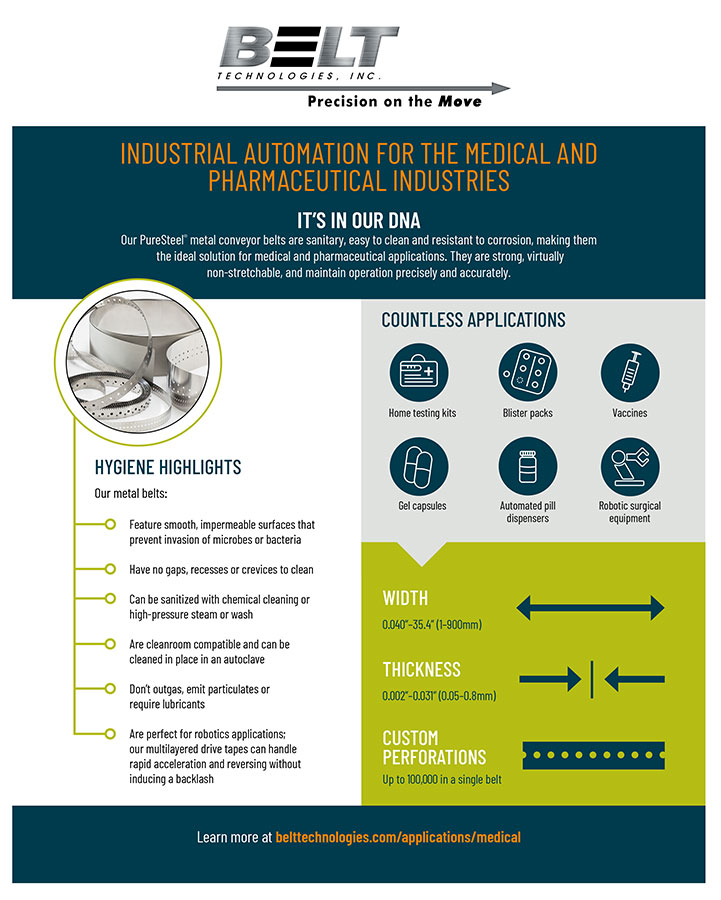Design engineers are often tasked with reducing manufacturing costs, whether by finding more cost-effective materials, designing products that are easier and cheaper to manufacture, or streamlining production processes. But while reducing operational costs is important, there is also an emphasis on maintaining high quality and reliability standards. Your goal is to optimize costs without sacrificing product integrity or performance.
Our PureSteel® metal conveyor belts offer several advantages that reduce operational costs—including reduced downtime and improved efficiency—without compromising quality, consistency or reliability.
Reduced Downtime
It’s pretty obvious that downtime costs money, so avoiding shutdowns is a huge priority on production lines. Here’s where metal conveyor belts really shine.
Durability and Longevity
PureSteel® metal conveyor belts are highly durable and resistant to wear, corrosion and temperature extremes. Because they can withstand high temperatures and exposure to chemicals without degrading, metal belts are ideal for industries such as food processing, pharmaceutical production and chemical manufacturing, where heat and chemical exposure are common. In addition, one of the many advantages of steel belts is the ability to laser cut directly on the belt.
These characteristics increase the longevity of the belts, reducing the need for frequent replacements and maintenance, minimizing production downtime and lowering overall costs.
Sanitation and Cleanliness
Metal conveyor belts are also easier to clean and sanitize, further reducing downtime. In addition, they don’t harbor bacteria or mold, which helps maintain high hygiene standards and reduces the risk of contamination, leading to fewer product recalls and associated costs.
Reduced Maintenance Costs
Due to their durability and resistance to damage, metal conveyor belts typically require less maintenance than belts made of other materials. In addition to reducing downtime, this also reduces labor and material costs associated with repairs and maintenance.
Improved Efficiency
Reducing downtime is only part of the equation for reducing operational costs. Another key factor is increasing efficiency, something metal belts can also help achieve.
Strength and Load Capacity
Metal belts can carry heavier loads compared to other materials, such as plastic or rubber. This allows for the transport of bulky or heavy items without the risk of belt failure, improving efficiency in handling and reducing the need for multiple conveyance systems.
Energy Efficiency
Metal belts have a high strength-to-weight ratio resulting in lower system inertia, which leads to reduced energy consumption, lower energy costs and a smaller carbon footprint. (As a bonus, metal belts are often recyclable, further contributing to sustainability goals!)
Precision and Control
Metal belts provide precise and consistent movement, which is essential for processes requiring high accuracy, such as in the assembly of electronic components or precision parts. This accuracy helps in maintaining product quality and reducing waste.
Flexibility and Customization
Metal belts can be designed and manufactured to meet specific needs, including different belt widths, lengths and patterns. This customization allows you to optimize the conveyor system for your specific production processes, enhancing efficiency.
But Wait, There’s More
Metal conveyor belts can be used in a wide range of applications, from food processing to automotive manufacturing. This versatility allows you to standardize your conveyor systems across different production lines, reducing the need for multiple types of equipment.
At the end of the day, the advantages of PureSteel® metal conveyor belts really add up, reducing operational costs without compromising product integrity, consistency or reliability. Let’s talk about how our conveyor solutions can help take your production to the next level.



